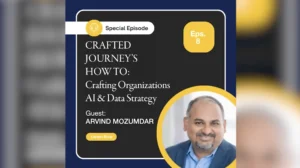Los Angeles Shows How Pro AV Can Take Over the Entertainment World
The Telestron exhibit, designed by artist Bradley G. Munkowitz, or ‘GMUNK’, has made its long-awaited West Coast debut at the famous ROW DTLA in the ever-expanding Arts District of Los Angeles.
After only being publicly debuted twice, once in China and once in Houston, Texas, the California exhibit opened in late February and will remain open until the end of March. Despite its major exclusivity, the installation can be seen for free by the public.
According to GMUNK, “At its foundation, the installation was an exploration of the absence and presence of light and how it defines a space.”
Technology as an Art Form
The creation of this installment was no easy feat. The core concept and story that Telestron tries to convey through the movement of two twin robots was written and developed by Stephen Marshall. He and his team wanted to recreate one of the “ancient world’s most sought-after immersive experiences.”
They employed two Kuka 210s as robotic conductors and used the large geometric shapes of the instrument to manipulate multiple light sources at once. They sought out huge dramatic effects in an attempt to obtain a “total takeover of the senses.”
(TELESTRON from VTProDesign on Vimeo.)
VT Pro built each physical piece for the exhibit at its studios in Los Angeles. The reflecting pools in the exhibit were created to keep attendees away from the robots, and the robots sat on weighted pedestals that were bolted down to the ground. Geo-shapes known as “icosahedron shapes” were attached to robots to help diffuse light.
LED COBs were then wired to frames inside the shapes to provide individual dimming control of the lights. The team created a master control system in Touch Designer where they could animate the robots moves in 3D. The master control triggered the robots and set a master timecode for the production. The team was then able to program the two moving lights as well as the lighting of the room itself.
Storytelling Through Experience
In experiencing the exhibit, attendees take part in a very old and sacred ritual. The ritual was created to “harness the spiritual forces of nature to create a transformative experience,” according to Marshall.
What was originally known as the Telesterion in Eleusis’ Greek festivals was reimagined and now called Telestron. The original name came from the “dark chamber” which housed the entire ritual. Centuries later, the chamber now features “cutting-edge robotic and light projection technology.”
When designing the Telestron, the team chose to portray the Diurnal Cycle. In science, a diurnal cycle is any pattern that occurs every 24 hours in result to the Earth fully rotating around its own axis. The cycle also influences the four seasons. The team focused on the cycle’s relation to the seasons and created four sessions representing each season. The “sun” was represented by the main light source itself.
A “chaotic and emotionally charged” fifth session was also added. The sessions were controlled by robotic conductors known as “lantern bearers.” The fifth and final session was expressed visually and sonically to further express the full effect of our current natural system.
From sacred ritual to seven-minute-long installation the Telestron is a uniquely abstract production that eloquently combines technology of the future with intricate consecrated acts of the past.
For the latest news, videos, and podcasts in the Pro AV Industry, be sure to subscribe to our industry publication. A new episode of the Pro AV Show drops every Thursday.
Follow us on social media for the latest updates in B2B!
Twitter – @ProAVMKSL
Facebook – facebook.com/marketscale
LinkedIn – linkedin.com/company/marketscale








